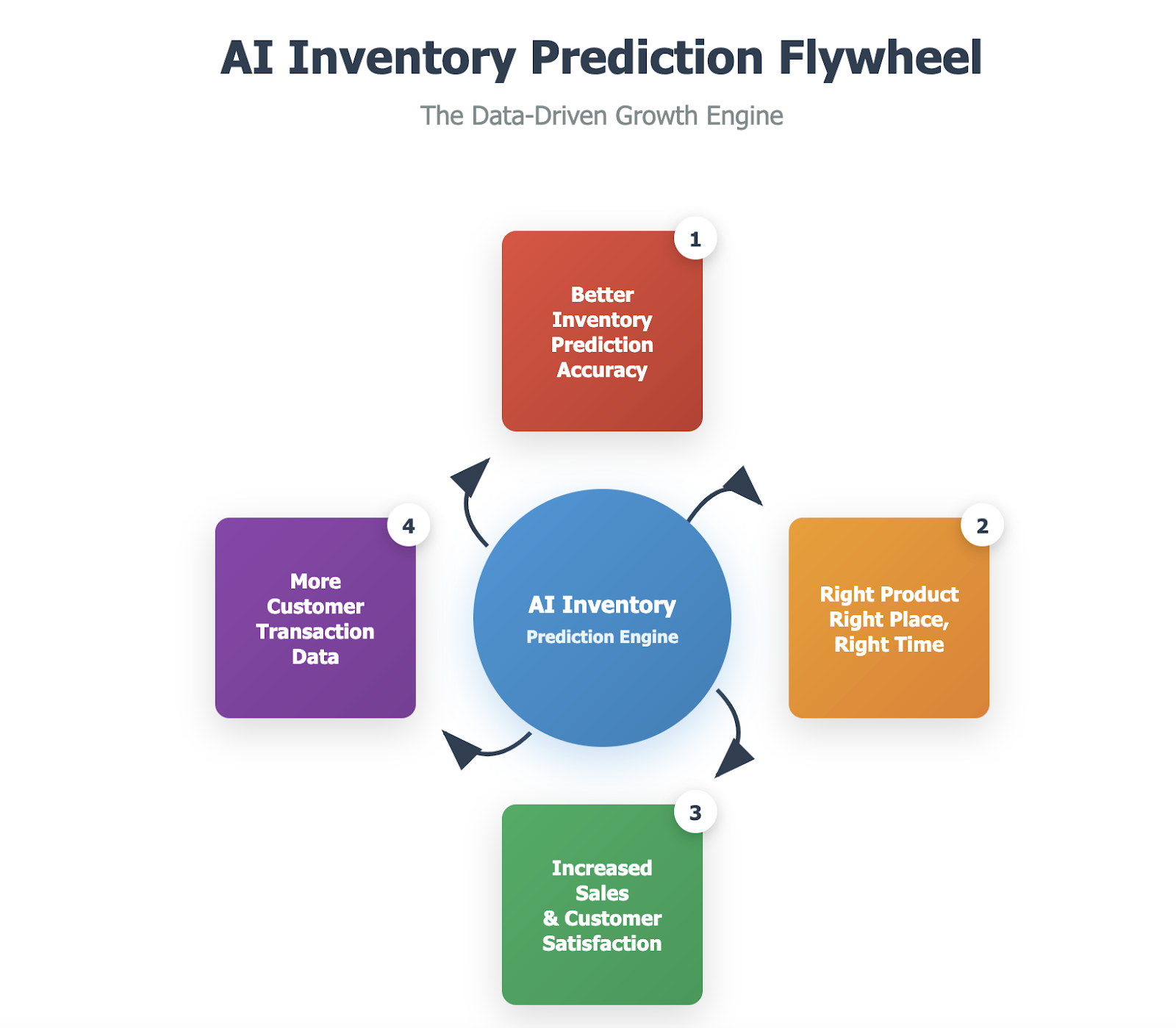Everyone talks about AI, agents, and conversational commerce. But what is that one thing that will make or break the AI Commerce(A-Commerce) experience?
Imagine this scenario: A customer asks their AI assistant, "I need size 9 tennis shoes for my daughter's summer camp, delivered by Friday." The AI instantly knows the customer's purchase history, budget preferences, and delivery requirements. It's ready to complete a $120 transaction in under 30 seconds.
But then it hits a wall: " out of stock."
Sales Lost.
The brutal reality in A-Commerce is that you have one shot to fulfill high-intent customers. There's no shopping cart abandonment to recover from no email retargeting campaigns. It's instant conversion or forever loss.
Inventory is changing from a logistics problem to a strategic partner.
Inventory is moving from “solving logistics problems to avoid stocks” to “strategic assets that impact top-line and enable success in AI commerce”.
Without accurate inventory prediction, even the most sophisticated AI agents become paralyzed.
When inventory is done right, it can not only reduce operational costs but also increase a brand's profit and delight customers. This creates a flywheel for the business to grow.

Let's take an example: a brand predicts sales with 95% accuracy at the zip code level, and then the brand
- Can deliver to customers the same day, increasing sales and delighting customers.
- Can serve more demand as stock clears out quickly, allowing restocking and freeing up cash flow.
- Reduce inventory holding costs and variable operational costs.
- Better pricing strategies in response to the surge in demand.
Challenges with current methods of inventory prediction:
Current inventory systems were built for a world where:
- Customers browsed, compared, and waited
- Out-of-stock meant "check back later"
- Conversion funnels allowed multiple touchpoints(or chances)
- Geographic distance was acceptable
But agent commerce creates a one-way door
- Micro-moment decisions with zero tolerance for stockouts
- Intent-to-purchase cycles measured in seconds, not days
- AI agents that need real-time inventory APIs, not human interfaces
- Hyper-local fulfillment expectations (same-day, even same-hour)
Why Now?
AI commerce is not a far-fetched future, but it is already happening.
OpenAI’s ChatGPT had 5.5 billion monthly visits in May 2025. Shopify has released its platform in a standard agent communication protocol to enable AI Agents to interact with the Shopify platform.
According to the Deloitte 2025 Retail report, seven in ten retail executives expect to have AI capabilities in place within the year to help personalize customer experiences. More importantly, the same report mentioned that retailers offering generative AI tools, such as chatbots, during the Black Friday weekend noted a 15% better conversion rate.
It is high time to get the underlying inventory prediction more accurate and be “Agent-ready”.
Ways to increase the accuracy of the Inventory prediction:
- Interconnect data across departments: Connect all different data sources from marketing, inventory and customer service.
- Leverage Unstructured data with Generative AI: Many critical decisions and activities on inventory are done over emails, chats, and excel sheets. With generative AI, we can ingest unstructured data along with structured historical data to build more automated inventory insights.
- Integrate external world data: It is becoming increasingly critical to integrate external trends, such as weather, social media, and macroeconomic trends. For example, major events like the FIFA World Cup 2026 can increase demand for certain products in host cities.
- Use advanced machine learning techniques: Many use time series-based statistical prediction, but using more advanced state-of-the-art models can help increase accuracy.
- Build a conversation intelligence layer to automate decision-making: With a conversation layer, inventory managers can quickly identify trends, review replenishment recommendations, and approve or adjust them.
- Continuous Learning Framework: It is essential to establish a framework that continually receives real-world feedback on forecast versus actual sales, allowing for continuous model improvement.
Practical Tips to build a new age inventory prediction tool:
STEP 1: Audit your current process and break down each activity
Walk through your current inventory prediction process, specifically focusing on some of the human decision-making activities, such as how they gather information outside of tools. It is important to break down tasks into more granular tasks and apply first principles to spot opportunities.
STEP 2: Rebuild your inventory process and success metrics
Instead of quickly building or buying a solution, develop your ideal inventory process that provides maximum value. Measure baseline and define success metrics.
STEP 3: Set expectations
Don’t think like a SAAS tool where you plug and play, then immediately observe the value. Building an effective ML/AI product that works takes time and effort. Therefore, it is essential to communicate expectations to stakeholders regarding the timeline and the non-deterministic nature of the product.
STEP 4: Build Expert Team
It is essential to organize the data for ML/AI models used by pilots. AI technology is still in its early stages, so prototyping is relatively straightforward, but bringing it to the real world takes time. It is crucial to assemble an expert team that can effectively launch and scale the product.
STEP 5: Run the pilot
Firstly, the tech team running the pilot should spend time closely with the business to understand the decision-making process, run a few iterations of experiments to find the best-fit ML/AI techniques and measure the performance against key metrics.
STEP 5: Start Small and experiment
Instead of direct deployment, run experiments in a specific hub for a select set of SKUs for a few days. Ensure that all impacted department is informed. Measure the forecast vs actual sales in real-time to minimize customer impact. If successful, increase the experiment for a week and also conduct it in other stores and warehouses.
STEP 6: Create a feedback loop
Once you meet the success metrics, ensure that you have built a framework that continuously gathers feedback and sends a prediction tool to improve accuracy.
STEP 7: Scale your Solution
Once your pilot demonstrates a successful outcome, roll out the tool to other hubs or regions.
Conclusion:
Agent commerce is happening, and inventory prediction is becoming the most critical factor as it bridges digital intent and physical fulfillment. In other words, inventory is the gateway to the A-commerce "buy now" and "buy for me" experience. Are you ready for this new paradigm shift?








